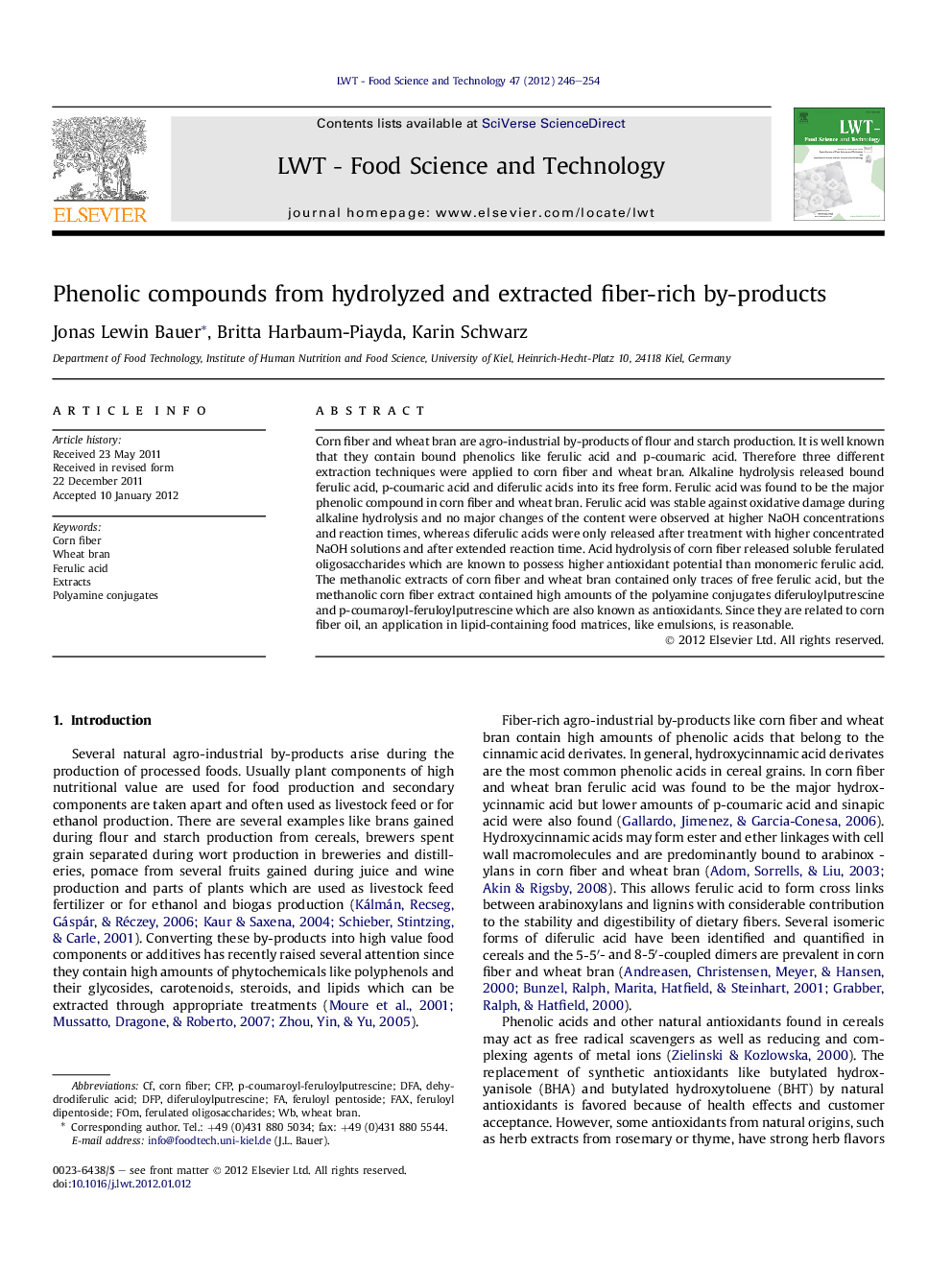| Article ID | Journal | Published Year | Pages | File Type |
|---|---|---|---|---|
| 6405529 | LWT - Food Science and Technology | 2012 | 9 Pages |
Corn fiber and wheat bran are agro-industrial by-products of flour and starch production. It is well known that they contain bound phenolics like ferulic acid and p-coumaric acid. Therefore three different extraction techniques were applied to corn fiber and wheat bran. Alkaline hydrolysis released bound ferulic acid, p-coumaric acid and diferulic acids into its free form. Ferulic acid was found to be the major phenolic compound in corn fiber and wheat bran. Ferulic acid was stable against oxidative damage during alkaline hydrolysis and no major changes of the content were observed at higher NaOH concentrations and reaction times, whereas diferulic acids were only released after treatment with higher concentrated NaOH solutions and after extended reaction time. Acid hydrolysis of corn fiber released soluble ferulated oligosaccharides which are known to possess higher antioxidant potential than monomeric ferulic acid. The methanolic extracts of corn fiber and wheat bran contained only traces of free ferulic acid, but the methanolic corn fiber extract contained high amounts of the polyamine conjugates diferuloylputrescine and p-coumaroyl-feruloylputrescine which are also known as antioxidants. Since they are related to corn fiber oil, an application in lipid-containing food matrices, like emulsions, is reasonable.
⺠Acid hydrolysis of corn fiber released ferulated oligosaccharides. ⺠Solvent extraction of corn fiber released high amounts of polyamine conjugates. ⺠High amounts of l-tryptophan were found in the solvent extracts of wheat bran. ⺠Higher amounts of diferulic acids were only released by alkaline hydrolysis.
